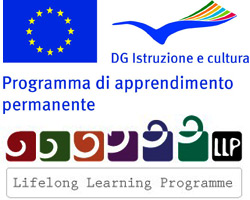|
|
|
|
ESSIM 2013
|

|
| |
|
Summer School — COURSES
|
[C1]
|
Eulerian and Lagrangian models of continuum mechanics
Notification: April 04, 2013 by Prof. P. Fischer.
Prof. A. Iollo (Dpt. Mathematics. U. Bordeaux 1, France)
We will derive the hyperbolic conservation laws that can model for example either gas flows
or large deformations of a compressible elastic material in either a physical (Eulerian)
or reference (Lagrangian) domain. The constitutive law characterizing each different
(gas, liquid, elastic) material will be studied under the hypothesis of material indifference
and thermodynamic consistency. Then, we will investigate the PDE system obtained in terms of
characteristic pattern and hyperbolicity conditions. Finally, we will put at work this knowledge
to devise consistent and stable schemes to integrate these models thanks to finite-volume schemes.
|
[C2]
|
Reduced order modeling applications
Notification: April 05, 2013 by Prof. Filippo Terragni
Prof. Filippo Terragni
(Dpt. of Materials Science and Engineering and Chemical Engineering. Modelling and Numerical Simulation Group.
U. Carlos III de Madrid, Spain)
Modeling is an essential ingredient of scientific research and many industrial tasks,
embracing different fields of application. There exists a large variety of mathematical models,
which are shaped according to the nature of the problem to solve and the involved tools,
all of them aiming at providing insights on and simplifying some (physical) scenario.
The feasibility of their practical implementation (nowadays largely performed by means of computers)
is a key point to remember in real applications. Reduced order models (ROMs) represent
a wide class of models that make use of a small number of degrees of freedom,
while preserving a satisfactory accuracy. In other words, these models are able to reduce
the complexity of the problem, as they allow for a good description and approximation of
the solutions in terms of few essential features (modes), thus reducing the necessary
computational resources (storage and CPU time). The course is dedicated to the introduction
of ROMs based on singular value decomposition (SVD), high-order singular value decomposition
(HOSVD), and proper orthogonal decomposition (POD). Various applications of practical interest
are presented and discussed, like compression of aerodynamic databases, reconstruction of
images and gappy data, fast simulation in fluid dynamics,
and construction of bifurcation diagrams.
Script 1
Script 2
Script 3
Script 4
Script 5
|
[C3]
|
Time Series Analysis: methods and some applications in finance
Notification: April 15, 2013 by Prof. Cláudia Nunes
Prof. Cláudia Nunes Philippart
(Dpt. Mathematics, U. of Lisbon, Portugal)
The subject of financial time series analysis has attracted substantial attention in
recent years, especially with the 2003 Nobel awards to Professors Robert Engle and
Clive Granger.
Nowadays there are modern developments concerning the analysis of financial data,
regarding, for example, high-frequency analysis and stochastic volatility. Also there
is the need to understand and use software.
In this course we will present several models used in the analysis of financial data.
We will start by the basic ones (like the ARIMA models, which are linear models), and
then we will present the main characteristics of models where the volatility is itself
a stochastic process, leading to the heteroscedastic models, as the GARCH model. The
concepts will be illustrated with the use of real data.
Finally we will mention briefly other approaches and tools, as the Kalman-filter and
the Markov-chain Monte-Carlo simulation.
Course Script First Part
|
[C4]
|
SIMULATION OF GEOPHYSICAL FLOWS
Notification: May 27, 2013 by Prof. Carlos Parés
Prof. Carlos Parés (University of Málaga, Spain)
Shallow water equations are widely used in ocean and hydraulic engineering to model flows in rivers, reservoir or coastal areas,
among some other applications such as floods, dam breaks, tsunami propagation in the ocean, etc.
In the form to be considered in this course, these equations constitute a hyperbolic system of conservation laws with
source terms due to the bottom topography and friction forces.
In recent years, there has been increasing interest in the design of numerical schemes with good properties
for shallow water equations. The schemes are required to have high-order accuracy (both in space and time)
in the regions where the solution is smooth and to capture shock discontinuities accurately.
Moreover they have also to satisfy a correct balance between the flux and the source terms, in order to properly
capture the water-at-rest stationary solutions.
In this course, the shallow water equations will be derived in the simpler case of only one space variable.
A short introduction to Godunov and Roe methods for systems of conservation laws will follow.
Next, the numerical treatment of the source term will be discussed.
A brief introduction to the multidimensional case and to high order extensions will be finally presented.
Course Script
|
|
Last update on 16/July/2013 by M. Carretero
|
Contact
Chair:
Prof. L. L. Bonilla
Director of the Gregorio Millán Institute.
ECMI Coordinator of the University Carlos III and member of the ECMI Council.
Coordinator:
Prof. J. M. Gambi
Gregorio Millán Institute.
University Carlos III of Madrid,
Madrid, Spain
Phone: +34 91-624-9441
Fax: +34 91 6249129
 gambi@math.uc3m.es
Mail to: gambi@math.uc3m.es
Mail to:
Escuela Politécnica Superior.
Gregorio Millán Institute.
Universidad Carlos III de Madrid.
28911 Leganés, Madrid, Spain
|

